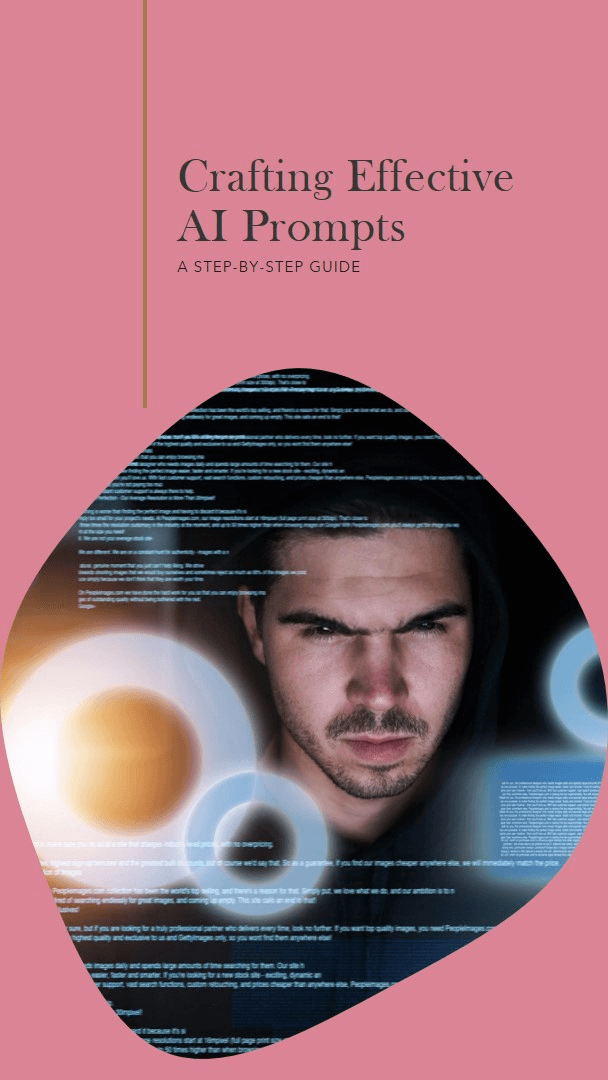In the realm of AI, an AI prompt refers to a question or instruction that’s given to an AI model, particularly large language models (LLMs), to get a specific response. It’s essentially the bridge between what a human wants and what the AI delivers.
Imagine an AI prompt as a set of guidelines that tells the AI what you’re looking for. The better the AI prompt, the more likely the AI is to understand your request and generate a response that aligns with your needs. Here are some examples of how prompts are used in AI:
- Creative text formats: You can provide a prompt to an AI to write a poem, code a computer program, or craft a marketing email.
- Image generation: With a descriptive prompt, you can instruct an AI tool to generate an image that matches your imagination.
- Data analysis: In machine learning, prompts can be used to guide the AI model during its training process, influencing what patterns it learns from data.
AI Prompt engineering, which is the art of crafting effective prompts, is becoming an increasingly valuable skill. By understanding how to tailor prompts, users can leverage AI models to perform various tasks and unlock their full potential.
How to create effective AI Prompt?
Crafting a good prompt involves a bit more than just giving an order. Here are some steps to consider when making an effective prompt for AI models:

- Define your goal: What do you want the AI to achieve? Are you looking for a creative story, a factual summary, or something else entirely? Having a clear objective will guide how you structure your prompt.
- Choose the prompt format: This depends on the AI tool you’re using. Some prompts might be simple questions or keywords, while others might involve providing a starting sentence or specific instructions.
- Provide context: The more context you give, the better the AI can understand your request. This could include details about the setting, characters, tone, or desired style for creative tasks. For data analysis prompts, consider including relevant background information or specific data points.
- Be clear and concise: Avoid ambiguity or overly complex language. The AI can’t understand your intent if your prompt is confusing. Use straightforward instructions and focus on the key details.
- Consider your audience: If your prompt is for generating content, think about who will be reading it. This can influence the tone and style you choose for the prompt.
- Use specific details: When possible, add specific details to your prompt. This can be especially helpful for tasks like image generation, where precise descriptions can lead to more accurate results.
- Start simple and iterate: Don’t get discouraged if your first attempt doesn’t yield the desired outcome. Start with a basic prompt and refine it based on the AI’s response. Experiment with different phrasings and see what works best.
Remember, prompt engineering is a skill that develops with practice. The more you experiment and refine your prompts, the better you’ll become at getting the results you desire from AI models.
Absolutely, let’s delve into some specific examples to illustrate how prompts function across different AI applications:
1. Creative Writing:
- Prompt: Write a science fiction story about a team of astronauts who discover a hidden civilization on Mars.
- Output: The spaceship shuddered as it pierced the Martian atmosphere, its hull groaning under the stress of re-entry. Captain Nadia Chandra gripped the armrests, her knuckles white. For months, their crew had endured the cramped quarters and monotonous routine of their journey, driven by the promise of scientific discovery. Now, as the red dust swirled around their landing pod, Nadia felt a surge of anticipation. What secrets did this alien world hold?
2. Image Generation:
- Prompt: Generate a detailed landscape painting in the style of Van Gogh, depicting a vibrant sunflower field under a starry night sky.
- Output: (An image showcasing a vast field bursting with sunflowers in rich yellows and oranges, reminiscent of Van Gogh’s brushstrokes. The night sky above shimmers with a multitude of stars, creating a breathtaking scene.)
3. Data Analysis:
- Prompt: Analyze the sales data for the past year and identify trends in customer purchasing behavior for specific product categories.
- Output: (A report highlighting a significant rise in sales for athletic wear during the summer months, potentially indicating a seasonal trend. The report might also suggest a correlation between targeted marketing campaigns and increased sales for specific product lines.)
4. Code Generation:
- Prompt: Write a Python function that calculates the area of a triangle given its base and height.
- Output: (A Python code snippet defining a function that takes base and height as inputs and returns the calculated area using the formula (1/2)baseheight.)
These are just a few examples, and the possibilities are ever-expanding as AI technology advances. Remember, the key to effective AI prompts lies in providing clear instructions, relevant context, and specific details to guide the AI towards the desired outcome.
#epicinfinite #epicarticle #epicblog
“Share your thoughts in the comments!”










